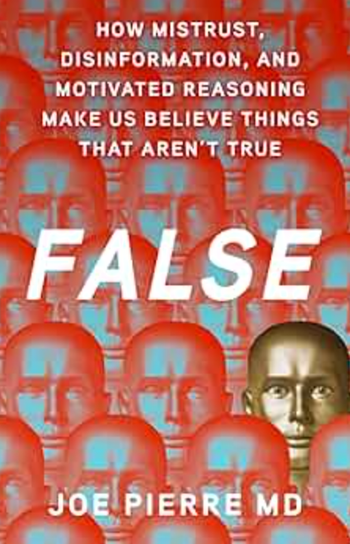
- Psychiatric Times Vol 28 No 11
- Volume 28
- Issue 11
The Tree of Life
Terrence Malick’s The Tree of Life is not easy entertainment, but for psychiatrists who might welcome an encounter with a brilliant, uncompromising mind, The Tree of Life is enthralling.
Film blogs report that in multiplexes around the United States, during the first week of
Terrence Malick’s The Tree of Life is not easy entertainment, but for psychiatrists who might welcome an encounter with a brilliant, uncompromising mind and are willing to embrace the dazzling cascade of unexpected images, The Tree of Life is enthralling. It is the most intellectually and artistically ambitious film of the 21st century. To understand this film, to get beyond that dazzled state, a second viewing is required. I have now seen it 3 times, each time bringing greater satisfaction and more appreciation of its psychological dimensions.
According to the avant-garde British director Peter Greenaway, the film’s original ambition was to be a great visual art, but as the narrative element has grown to dominate the medium, even the most creative cinematography has been subordinated to the story. Movies, Greenaway laments, have become the art form of the Philistines.
If Greenaway correctly diagnosed the aesthetic crisis of modern film, The Tree of Life is the solution. Malick seems to intend that visual images dominate the first viewing experience-the mind has time to register the cascade of images but not to comprehend, to reflect, or to anticipate. The marketing describes the construction of the film as impressionistic. This might suggest that one impression leads to the next, a sort of free association. But there is nothing free in the associations: every link has been chosen carefully. Malick spent 30 years thinking about this film. And after shooting footage, he devoted another 3 years to editing; 5 co-editors are acknowledged in the credits. They seem to have invented a poetic rhythm, a visual music, which has more in common with a symphony than a novel (and, indeed, the music lifts your soul and sends chills down your spine). The images carry the creative trajectory.
A rough approximation of what a psychiatrist might see in the movie is a family, the O’Briens, dealing with the psychological trauma of an unexpected death of one of their own. Then before we can be certain of our psychological bearings, Malick takes us from the human to the cosmic and nothing less than a depiction of the creation of the universe and the evolution of life on earth. Having shown us our insignificance, suddenly the director brings us back to psychology and a troubled boy coming of age in the traditional family where father rules, mother loves, and Oedipus stirs. The film ends with a vision of the afterlife.
Many critics describe The Tree of Life as a philosophical exploration of the meaning of life. In fact, Malick is one of a surprising number of contemporary filmmakers who began in philosophy. He taught and translated Heidegger before deciding he was not an academic.
But with his background and the lack of a clear narrative, it’s not surprising that some would see his film as dealing with philosophical questions. Be that as it may, Malick has given his film an epigraph, a quote from the Book of Job, that suggests something different: “Where were you when I laid the foundations of the Earth . . . when the morning stars sang together and all the sons of God shouted for Joy!”
The traditional understanding of those lines suggests the humbling of Job, a good man put to a test of faith by a compassionless God. The sense of the quote can be understood to represent the essence of Malick’s project itself, a dialectic of grand ambition and abject humility. On the one hand, he audaciously depicts creation-we are there when all the sons of God shout for joy. On the other, he shows us a father, a mother, and their 3 sons, who, like all humanity, inevitably endure profound humbling.
This is not a philosophical project . . . it is simply posing questions about the meaning of life. Malick has an answer in his film’s exploration and embrace of faith, even in the compassionless God of Job. He will show us the afterlife, where an angelic mother who still grieves for her beloved son joyously proclaims to God, “I give him to you, I give you my son,” and finds ecstatic salvation.
That mother and the world Malick creates for us belong neither to everyday reality nor to the realm of dreams. The Tree of Life gives us the spiritual world in which God is present. The mother (Jessica Chastain) walks into the woods, and the trees become a cathedral. She points to the sky and tells her child, “That’s where God lives.” In every scene she is the Madonna. Throughout the film, mother and son whisper to God in voiceovers. Some take these as prayers, although they are not those one finds in prayer books. This is the lonely inner voice of faith that speaks directly to God, or of shaken faith that wants God to demonstrate his presence. The miracle of Malick’s cinematography is that, like the greatest religious art of the Renaissance, it conveys the presence of God even to nonbelievers. But Malick and his cinematographer, Emmanuel Lubezki, achieve this in an entirely contemporary way.
Chastain as the mother is eerily beautiful, the embodiment of sacred innocence. Far from the typical Hollywood actress, she has red hair and a pale complexion and conveys vulnerability. When she asked Malick how he wanted her to play the part, he suggested she visit the Metropolitan Museum of Art and study the paintings of the Virgin Mary. Remember, “I give you my son.”
Malick’s instruction is another key to his project. He did not ask or expect her to reveal her character over time as one might expect in a linear narrative. There does come a moment when she stands up to her tyrannical husband’s cruel discipline of her sons, and there are moments of heartrending grief and empathic loving of her sons. Early in the film, Chastain’s character speaks of the way of nature and the way of grace. The way of nature is Hobbesian self-interest-it only cares for itself. The way of grace is selflessness, love, and forgiveness. Then she gets a letter telling her that her 19-year-old son is dead. That is her test of faith. Heartbroken but conforming to the way of grace, she transcends her human grief and offers up her son as an ecstatic gift to God.
The Tree of Life in my interpretation/conjecture is Malick’s meditation on his own life: an account of his struggle for faith in Job’s compassionless God.
Malick is both reclusive and secretive. He never allows interviews; he refuses public appearances; and he avoids appearing on television, being photographed, and saying anything about his private life. Enough is known about him to suggest that this film is deeply autobiographical. Like Jack O’Brien-the film’s main character, played in his youth by Hunter McCracken and in adulthood by Sean Penn-Malick is the oldest of 3 brothers. His younger brother Larry, like R.L. (Laramie Eppler) in the film, played classical guitar. Larry studied with Segovia in Spain and committed suicide as a young man. The third brother was severely burned in a fiery car crash and scarred for life. In the film, one of Jack’s friends bears the scars of a burn across the side of his scalp. The camera repeatedly comes to rest on that scar, asking Jack’s question . . . “God, how could you let that happen?”
The O’Briens are not identical to the Malicks but there are striking similarities. Malick’s father was of Lebanese descent, a geologist and a self-made man who became an executive at Phillips Petroleum. As the driven Mr O’Brien, Brad Pitt astonishes. Who would have thought that Pitt might be one of the most talented actors of his generation? Actors have apparently long known of Malick’s ability to bring out the best in them. Still, Pitt’s character, like Chastain’s, is an archetype, not a psychologically nuanced individual who evolves over time. One might think of them not as actual people, but as figures who exist in their son’s selective memory of his childhood. Jack’s early childhood, in the same way, is presented as the distillate of his memories, the experience of childhood from the child’s point of view. Malick does this as well as it has ever been done in film.
Malick’s depiction of Jack’s coming of age has much in common with Freud’s description of the Oedipus complex and superego formation. It may be set in 1950s Waco, Tex, but this family’s dynamics were known in circa 1900 Vienna. Young Jack is at war with his father. Jack contemplates killing him, and he calls on God to do it for him. God is the alternative father-authority with whom he struggles. Why does this omnipotent and omniscient God let a child die, let a child be burned, let a man be crippled? Jack is painfully alone in the world. God is not watching over him.
Malick shows us a church service in which the priest warns that the congregation cannot expect God’s help or protection. In his rebellion against his father and his disappointment in God, Jack tests the limits of his rage by torturing animals and his brother, the beloved guitar-playing R.L. Jack seems to be moving along the path to delinquency and bullying. (This is what the Ericksonians would describe as a negative identity, an antisocial personality that emerges from adolescent rebellion, crisis, and confusion.)
Jack’s erotic longing for his mother is displaced onto a neighbor, whom he peeps on through her windows at night. Later he watches her drive away in her car. He enters her home, rummages through her bureau, pauses over her jewelry, and steals her slip. We see him lay it out on her bed as if some fantasy is to be enacted, and suddenly he is running frantically along the riverside with the stolen slip in his hand. He hides it under a piece of wood, thinks better of it, and sets it in the river to be carried away by the current.
As though to remind us of the true object of Jack’s lust, Malick then shows us the boy watching his mother walk through the house in her nightgown. The wish for the tyrannical father’s death, the erotic desire for the saintly mother, and the sadism toward the beloved younger brother are palpable. Freud could not ask for anything more, and then Malick gives us Freud’s resolution of the Oedipus complex: identification with the father: “I’m more like you than her,” a reconciled Jack tells his father.
Jack’s coming of age is the most linear sequence in the film, but the future haunts the present in Malick’s rendering. All this takes place chronologically before R.L.’s death at 19, which we learned about at the beginning of the film. And the grown-up Jack will be forever troubled by his bullying of his brother. If Pitt gives a superb performance, then one must say that McCracken as young Jack is spectacular; this has to be among the few greatest performances in living memory. He does not look like an actor playing a part; he is young Jack. His cruelty to R.L., a touching performance in its own right, tests our sympathy. He is the most psychologically real character in the film and, most likely, he is Malick’s memory of himself.
It should be emphasized that in The Tree of Life and in his previous 4 films, Malick never depicts prosaic present-day reality. This is one of Malick’s ways of keeping us suspended in the world of the spiritual. There are also scenes of the adult Jack (Sean Penn) wandering in the wilderness-psychologically, a troubled man; spiritually, a tortured soul. And finally, Jack walks in the shallows of an ocean. We are in the afterlife, and Jack is reunited with the brothers of his memory, including himself. His mother gives her son to God, and Jack falls to his knees in humility, accepting authority and kissing the feet of someone whose face we never see. The last image is of a long bridge out of which swoops a single sea bird. The O’Briens have all found salvation through the way of grace.
But don’t take my word for it. After seeing the film for a third time, I believe that any verbal interpretation, right or wrong, could not be aesthetically faithful to Malick’s awe-inspiring visual masterpiece.
Articles in this issue
about 14 years ago
How We Age: A Doctor’s Journey Into the Heart of Growing Oldabout 14 years ago
The Medication Check as Psychotherapeutic Opportunityabout 14 years ago
Hippocrates Under Contractabout 14 years ago
Dangerous New Treatment Guidelines for ADHD Unveiledabout 14 years ago
Children and Pets: A Winning Combinationabout 14 years ago
Witness to an Extreme Century: A Memoirabout 14 years ago
Improving Suicide Risk Assessmentabout 14 years ago
A Tribute to Max Fink, MDabout 14 years ago
A New Report on Pain in America: Like Déjà Vu All Over Againabout 14 years ago
If You Were a Cookie, What Kind Would You BeNewsletter
Receive trusted psychiatric news, expert analysis, and clinical insights — subscribe today to support your practice and your patients.

















